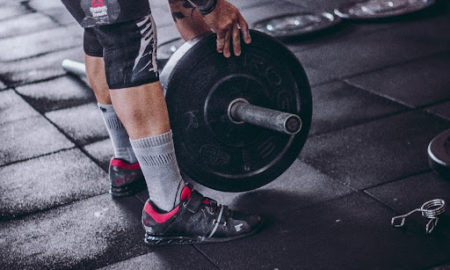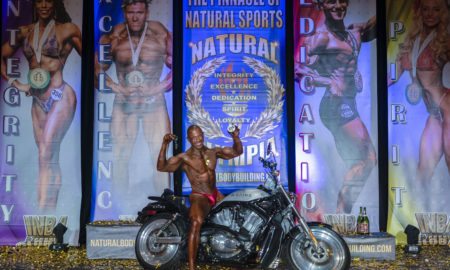What draws me to bodybuilding is the variety. Granted, there’s always the quest to get bigger, and the physics behind lifting weights is pretty much the same no matter how you do it. What’s more, there are different theories and methods, but they all pretty much amount to moving extremely heavy loads of iron from point A to point B with the intent of making the target muscle grow. When you get past the basics, however, bodybuilding is a wonderful world of differing lifestyles, methods, theories and results.
Take the Mr. Olympia winners, for example. The standard to which all bodybuilders aspire has been represented by a wide array of physiques—including Arnold Schwarzenegger, Frank Zane, Ronnie Coleman, Jay Cutler and, currently, Dexter Jackson. Outside of being bodybuilders and possessing tremendous physical gifts, those champions have little in common from a physique standpoint with one another. In terms of chest training, each has been on his own journey, experimenting and tweaking his formula for years in hopes of finding the magic bullet that will spur more growth.
With that in mind, allow me to introduce former WNBA pro and current NPC competitor Curtis Fisher. A rising star on the West Coast—Curtis placed eighth in a competitive middleweight class at the ’08 NPC Excalibur last December—he has been winning natural contests on the amateur level since 1998. His biggest win came in the lightweight class at the ’00 Musclemania, a contest that aired on ESPN. In 2001 Curtis came in too heavy and dropped to 15th in the welterweight division at the same show.
After taking 2002 off to reassess and make improvements, Curtis dipped his toe in the NPC waters at the ’03 Pacific Naturals, where he finished a respectable fourth. Subsequently, he stopped competing again, choosing to focus on filmmaking and his full-time career as an EMT. (Clips of his movie “An American Zombie Classic” can be viewed on his MySpace page, www.myspace.com/fisher productions.)
In 2008 the bodybuilding bug bit again and, despite having received funding for his biggest film production ever, Curtis decided to return to the posing platform. In addition to the aforementioned Excalibur, he did the ’08 WNBF Pro Natural International, where he finished fourth as a heavyweight.
Curtis plans to step onstage again next spring, at the ’10 NPC Orange County Classic, hoping to win his weight class this time and qualify for national-level competition. It won’t be easy, he said.
“As a natural competitor it takes me a lot of time to make improvements, so it’s primarily that, as well as financial and time constraints, that limit me to one to two shows per year.
“Besides,” he admitted, “when I step onstage next, I want to blow them away.”
Part of Curtis’ plan for moving up the amateur ranks is to improve the balance between his upper- and lower-chest areas. He also wants to add some overall mass to his chest and improve his conditioning the next time he competes.
All of this brings me back to my point about variety in bodybuilding. Curtis’ chest plan is unique among those of all the competitors I’ve interviewed. His theories and workout splits are thought-provoking, containing nuggets of wisdom that all lifters can apply to their routines.
“I train closer to a powerlifter than a bodybuilder in the off-season,” Curtis revealed. “I want to move heavy weights to build mass, with long rests between work days.”
“Long rests” can mean taking two days off between workouts, training only three days per week and focusing only on the bodyparts that he’s targeting for growth. So his split can involve training chest, arms and quads in week one and then chest, hamstrings and back in week two. His growth goals determine his schedule, as he eschews more traditional workout splits.
Yes, it’s different, but the amount of rest he gives them has really enabled his muscles to grow.
“Since I’ve decided to make a push competitively, I’ve really been pleased with this off-season plan.”
He pointed out that his ability to fully exhaust the muscle at every workout, every time, has greatly increased the number of sets he can perform at each gym session.
The one constant in Curtis’ chest routine is that, except for during the off-season, he starts off with a long warmup of flat-bench presses done with an Olympic bar—sets designed to prep the muscles and joints for the heavy weight to come. Depending on the way he feels, he does as many as four warmup sets, then moves into his work sets, ultimately pyramiding the weight up to where he’s topping off with very heavy weights for three to five reps. Curtis’ guess is that, on a normal day, he does three to four warmup sets and three to five work sets on the bench press.
“I don’t want to get injured,” he admitted, “not only because of my competition but because I have a day job as an EMT as well.”
In other words, working out is great, but not being able to do your job because you’ve injured a shoulder? Not so much.
The next stop is another chest staple, the incline-bench press, again performed with an Olympic bar. Curtis calls this “meat-and-potatoes lifting”—big, compound movements that work not only the target muscles but also the surrounding stabilizers. He does his sets in true pyramid style, going up in weight and down in reps. He believes strongly that working with compound movements, under control, is another way to help prevent injuries and keep him moving forward toward his goal.
The third trick up Curtis’ injury-prevention sleeve is that he stretches after almost every set. He takes time to feel the muscles working between sets and also keep them loose and ready for the next movement.
After completing his work on the incline press, Curtis immediately picks up a pair of dumbbells—probably 60s in the off-season, lighter precontest—and begins a full pyramid progression of incline dumbbell presses—but with a different goal. His aim with the bar is to move the weight, piston style, while his aim with the dumbbells is to squeeze the muscles in the fully extended position to engorge them with blood. While it may seem odd to do back-to-back incline presses, Curtis’ explanation makes sense: “My upper chest is lagging behind my lower chest, so I substituted a second round of inclines for declines.”
Once he emerges from incline hell, he finishes the workout with a turn on the pec deck. Despite his chest being thrashed, he throws in a warmup set here to help his muscles acclimate to the difference in the movement; then he pyramids up in weight, doing fairly high reps—anywhere from 10 to 20, depending on feel—for four sets and finishes off the workout with stretching.
“I like to keep the rep speed on this fairly average. I’m not trying to beat up the muscle with these last two as much as I’m trying to fill my chest muscles with blood.” Curtis prefers to use flyes as a finishing move because they give his chest muscles a great stretch as well as a good end to the workout, he said.
When you sum them up, his theories are fairly straightforward:
1) Work the target muscle once per week in the off-season.
2) Work the target muscle hard.
3) Wear out the muscle first.
4) Fill it with blood to finish.
Now that he’s done, it’s time to rest his chest for a full week—unless he’s in precontest mode. In that case he works each muscle group twice a week, training five days per week with a three-on/two-off schedule [see his split on page 110].
“Precontest the goal is totally different,” he explained. “In the off-season I’m trying to bulk up, while precontest I’m trying to shed fat and retain muscle, two totally different priorities.” Because his goals are different, his philosophy changes dramatically. Gone are the flat-bench presses, replaced at the end of the workout with cable crossovers, done until his chest burns. Weight decreases, rep speed increases, rests between sets decrease, and his workout time decreases dramatically.
“During the off-season I’m in the gym three times per week for two hours; during my precontest period I’m in and out in an hour,” he said. Overall, however, his time in the gym increases, due to the added workout sessions as well as increased time spent doing cardio.
The question is, has the strategy been working?
“During the 5 1/2 years I took off from competing, I went down in weight to 170 pounds,” he said. “When I got back into competing, I put on about 40 pounds and then dieted down to 172 pounds in contest shape. Next year at the O.C. I hope to be right at the top of the middleweight limit—176 1/4 pounds—but rock hard. When I compete, I always want to bring big improvements to the stage.”
Editor’s note: To contact Curtis Fisher for guest posings, sponsorships and film directing, write to [email protected]. IM
Fisher’s Workout Splits
Off-season: He trains three days per week with one day off between workouts. He usually trains one bodypart per day. For example:
Week 1
Monday: Chest
Wednesday: Quads
Friday: Arms
Week 2
Monday: Chest
Wednesday: Hamstrings
Friday: Back
Precontest: He trains five days per week, three-on/two-off, with two workouts per day—morning and evening—on the days adjacent to the rest days. He hits each bodypart at least twice per week—once heavy and once light. Muscle groups targeted for improvement often get three hits per week. For example:
Monday: Chest, triceps
Tuesday: Back, biceps
Wednesday: a.m., quads, abs; p.m., hamstrings, calves
Thursday: Off
Friday: Off
Saturday: a.m., chest, triceps; p.m., back, biceps
Sunday: Quads, abs
Note: At the time of our discussion, Curtis was off-season and hadn’t yet planned his next precontest program.
—C.C.
Curtis Fisher’s Chest Chisler
Barbell bench presses
Warmup x 3-4
Work sets x 3-5
Pyramid up in weight while decreasing reps.
Incline barbell presses
Work sets x 3-5
Pyramid up in weight while decreasing reps.
Incline dumbbell presses
Work sets x 4-8
Pyramid up and down in weight.
Peck deck flyes
Work sets 4 x 10-12
Pyramid up in weight, getting 10-12 reps, depending on feel.
Off-season variation
He sometime deletes flat-bench barbell presses and adds:
Cable crossovers 3-4 x 15-20
















You must be logged in to post a comment Login